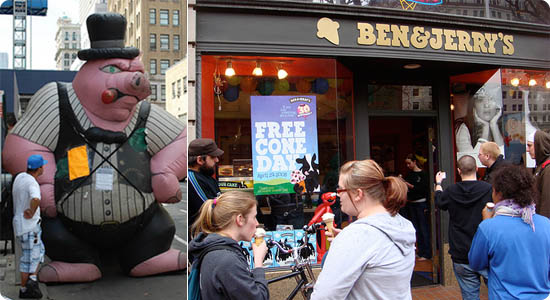
To be a greedy pig or a free cone, that’s the question
First published: February 2009 | Sometimes big events and ongoing trends clash in a beautiful way, only to converge soon after. Consider the following:

GENERATION G | "Captures the growing importance of 'generosity' as a leading societal and business mindset. As consumers are disgusted with greed and its current dire consequences for the economy—and while that same upheaval has them longing more than ever for institutions that care—the need for more generosity beautifully coincides with the ongoing (and pre-recession) emergence of an online-fueled culture of individuals who share, give, engage, create and collaborate in large numbers.
In fact, for many, sharing a passion and receiving recognition have replaced 'taking' as the new status symbol. Businesses should follow this societal/behavioral shift, however much it may oppose their decades-old devotion to me, myself and I.”
Three trend-drivers for GENERATION G:![]()
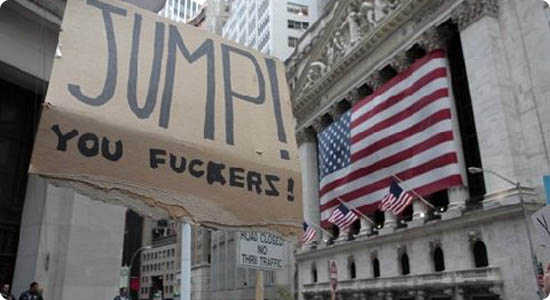
Photo courtesy of vxla
The current financial meltdown has led consumers to be more disgusted than ever (if that’s even possible) with greedy corporate execs who just don’t care. Many in the corporate world are so far removed from what is now an immensely better informed, more opinionated consumer arena, that their (non-)communications, their (inter-)actions, their entire behavior is deeply out of tune with what consumers want and expect in the years to come.
This didn’t happen overnight of course. The financial crisis was just the straw that broke the camel's back: consumers’ negative and raw emotions stem from too many brands who decided to stop caring a long time ago. In most cases, this starts at the top, with share-price-obsessed execs not generous to (or caring for) their employees, who in turn stop giving a damn about actual customers*.
Some fun (US) stats from Reputation Garage:
- As few as 13% of all Americans place their trust in big business (and it's not much higher for other mature consumer societies!).
- Only 39% of employees in a Watson Wyatt survey said they trusted senior leadership.
- Some three-quarters of US consumers feel that companies don’t tell the truth in advertising.
- Three-quarters of employees in big companies observed violations of the law or company standards in a 12-month period.
* Now, there are of course brands and executives who do get it, and those tend to be the ones that pop up as leading examples in our trend briefings ;-)
![]()
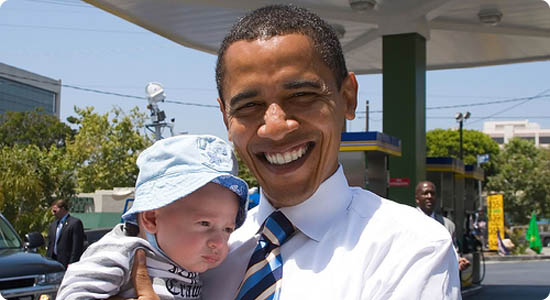
Photo courtesy of nkpix
And yet...the need for the opposite of greed (that would be generosity!) is never greater than in challenging times. Challenging times see people craving care, empathy, sympathy and generosity. Now, with a full-blown recession having set in, expect to hear even more about caring, as that’s what consumers and citizens will demand from governments and organizations: someone to take care of their jobs, their savings, their fellow citizens. This need becomes extra poignant in societies where individualism is the new religion, and thus every person, young and old, rich and poor, has been told by society that he or she matters as an individual.
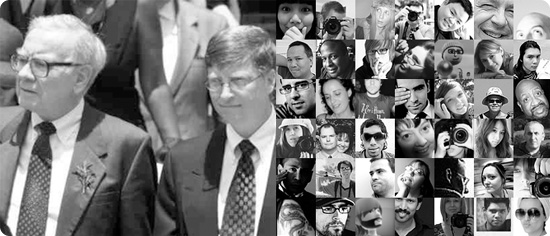
However, in essence, GENERATION G isn't about anger and recessions: the larger and more lasting trend is passionate, empowered individuals (if not entire generations) being more willing and able to give, to share, to collaborate; to be more ‘generous’ in many ways. Which in turn has made generosity one of a new set of status symbols.

For a long time, in the world of the super-wealthy, not engaging in a little philanthropy has meant a serious loss in status. Over the past few years, billionaires around the world have been upping the ante for other financially independent individuals by giving away really big chunks if not all of their fortunes. In fact, it's impossible these days to be very rich and not to donate uber-generously to charity: the benefit to one's social capital completely trumps the monetary gains from keeping one's financial capital sitting in an account. Being generous is seen as a class act, while greed is, well, out.
Now, will the rich donate less to charities in difficult times? Of course. But while economic prosperity dictates the size of gifts and donations, generous behavior has already become the long-term norm.

But. The most important driver behind GENERATION G is a wide variety of consumers and citizens being more generous. We're talking the collaborative / free / creation / crowdsourced / gift / sharing movement* that—especially online—has unlocked in entirely new ways the perennial need of individuals to be appreciated, to be loved, to feel part of the greater good, to contribute, to help... To basically find status and gratification in something other than consuming the most or the best.
Don't think this a passing phenomenon: younger generations practically live online, while over the last dozen or so years, virtually every prediction of how the web would infiltrate the 'offline' world has proven too conservative. As our favorite online guru, Kevin Kelly, rightly stated a few years ago: ‘online culture is the culture’.
So... Everything seems to have aligned to make generosity (“liberality in giving or willingness to give”) a leading theme in the business arena this year. As always, companies can learn from consumers, though it's not a 'want' but a 'need': companies need to mirror this societal shift if they want to regain their relevancy. We’re talking truly becoming a caring brand—one that is generous to customers, generous to employees, generous to the environment, generous to social causes, and so on. We know you know this: GENERATION G is more about context and timing than out-of-the-blue insights.

Still, whereas you (and we) enjoy broad statements like ‘younger generations are more prone to collaboration, sharing and giving’, some of your colleagues and/or superiors will want to see proof of this phenomenon, especially if they themselves are not (yet) part of GENERATION G. Numbers! Facts! Stats! So here are some tidbits—all related to well-known ‘generous’ sites for and by the people—that may help:
- Flickr, the photo sharing site, now boasts more than 33 million users, more than 3 billion images, and was handling 3,087(!) new uploads per minute last time we checked. Oh, and the below (from RapLeaf) speaks volumes about which age groups are dominant within GENERATION G:

- Wikipedia has 8,687,877 registered users, 144,788 of whom have been actively involved in the last 30 days. It offers 15,741,616 info pages.
- 13 hours of video are uploaded to YouTube every minute, while 1 billion videos are watched. A day. And that was LAST year.
- And don't get us started on the millions of blogs (sharing insights and thoughts), or on reviews (Tripadvisor.com alone hosts 20,000,000 hotel reviews), or on an entirely new infrastructure for giving away excess stuff (just browse the listings at the Really Really Free Market and the FreeCycle Network). Add your own examples if you must, but don't dwell too much on collecting evidence. GENERATION G is above all a trend to be applied as soon as possible.
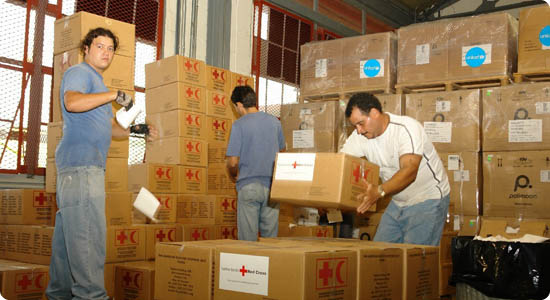
Generosity encompasses more than charity

We know, there’s hardly a company left that doesn't have some kind of ‘social responsibility’ program in place. But while supporting a faraway orphanage, making sure office coffee cups are recycled, and celebrating an annual ‘Diversity Day’ are all laudable causes, social responsibility is hardly ever more than the sum of a number of initiatives that at times can feel forced—a response to societal pressures instead of a holistic desire to be good and to be generous. And we haven't even addressed the need to incorporate generosity towards employees and, above all, customers.

Speaking of which: being generous to customers doesn't always mean giving away everything you have: we're not suggesting you forget about bottom lines and profitability. Hey, even we—while happily publishing our Trend Briefings for free—do charge for our Premium Service. GENERATION G is about being a bit kinder, a bit more caring towards your customers.
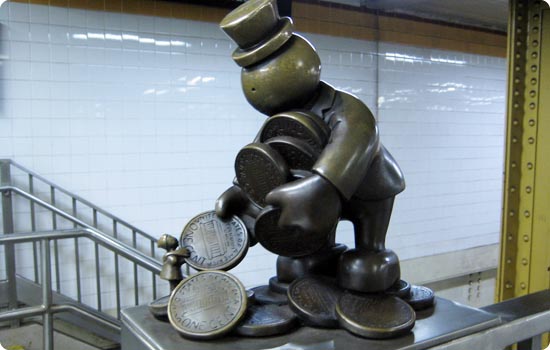
Now, if you’re a loyal trendwatching.com reader, you'll know that in the past few years, we’ve addressed all kinds of ‘generosity’ sub-trends, from FREE LOVE to PERKONOMICS to BRAND BUTLERS. So GENERATION G is really a long-overdue ‘umbrella trend’ that pulls together various existing and new sub-trends. Warning: this is where we’re going to stuff you with examples. So no more excuses: other brands are jumping on the GENERATION G bandwagon, and so can you. Learn from, and get inspired by:
Let's start with social responsibility, charity and good causes. There are lots of innovative corporate donation programs popping up, and one characteristic many share is that—in tune with the aforementioned 'age of collaboration'—they ask customers to co-decide and (often) co-donate. Another common element is the use of online and/or mobile technologies to make the most of impulse-driven and/or networked fundraising and donating. Be inspired by the following CO-DONATE examples (just the tip of the iceberg, really):
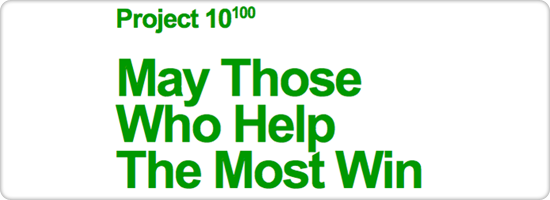
- Last year, Google launched Project 10100, encouraging the public to submit ideas that help other people, with the most helpful concepts eventually being implemented with a share of USD 10 million. Submissions can fit into a number of categories, including community, environment, health and education, although Google is reluctant to place any restrictions on the ideas, and also offers an ‘everything else’ category. After the submission deadline on 10 October 2008, the proposals were narrowed down to a shortlist of 100. On 27 January 2009, the general public will be invited to vote for 20 semi-finalists, from which five winners will be chosen by an advisory board.
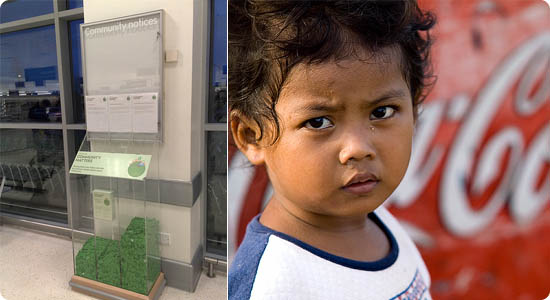
- Last July, British grocer Waitrose launched a locally-focused giving program that enlists customers' help in focusing on issues closer to home. Waitrose's Community Matters program assigns each store GBP 1,000 each trading month to donate among three local organizations such as community groups, schools or local divisions of national charities. Customers nominate the organizations to benefit, and Waitrose's local democratic bodies make the final selection. Customers are then offered a token each time they shop that can be inserted in any of three Perspex tubes—one for each of the selected charitable groups. At the end of the month, the pile of tokens donated to each organization is weighed and the beneficiaries receive a corresponding proportion of the cash.
- A similar program is in place across the Atlantic at upscale chain Whole Foods, where customers who bring their own bags are rewarded with wooden nickels that can be deposited in boxes assigned for donation to select local charities.
- It's a tragic fact that one in five African children die before their fifth birthday from simple causes like dehydration. Basic medicines could save those children's lives, yet no means has yet been found to make them readily available. The ColaLife project aims to tap into the formidable distribution network of none other than Coca-Cola to get oral rehydration salts and educational materials to the children who need them. The project has tapped the power of Facebook and other social networking tools to amass a group of more than 6,000 supporters, garner widespread media coverage and—at least as important—get the attention of Coca-Cola.
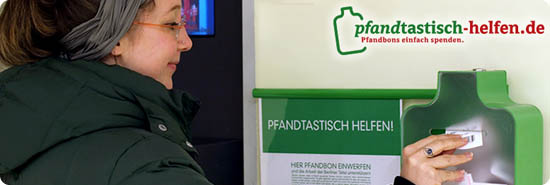
- One of Scandinavia's largest retailers, Coop has added a charitable twist to the process of claiming deposits on bottles. The retailer’s collection machines (in over 1,200 of its Danish stores) feature a button that lets customers instantly donate their bottle money to charity instead of collecting it for themselves. The real generous genius here though? The manufacturer of these machines, Norwegian Tomra, who is exporting them (donation button included) around the world now. Also check out a similar German initiative: Pfandtastisch Helfen.
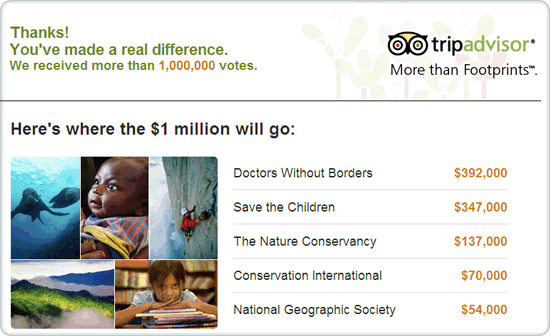
- Tripadvisor recently ran a 'More than Footprints' initiative, in which the company promised to donate USD 1 million. Visitors to the site were invited to vote for one of five pre-selected charities. One million votes were cast, with Doctors without Borders ending up receiving most votes and thus the biggest donation.
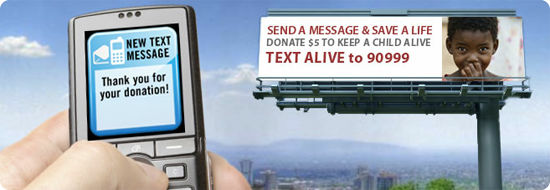
- More CO-DONATE initiatives will no doubt follow online, as online spirit of collaboration and new technologies continue to converge. From impulse-driven 'mobile giving' (check out mGive and TEXT2HELP) to political donations (USD 500 million for Obama—need we say more?) to the ubiquitous social networking sites getting into the game too (visit MySpace's Impact initiative, or learn from this Top 10 of Facebook Charity Apps.)
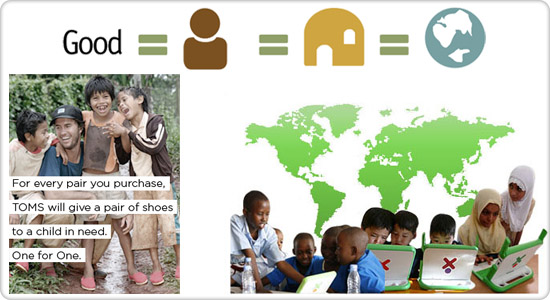
Last but not least, some examples of what we've dubbed 'adopt-a-consumer', a ploy that involves well-off consumers buying something for themselves, and then, directly or indirectly, buying a similar product or service for someone who's, you guessed it, less-well-off:
- TOMS Shoes sells simple, ethical, slip-on shoes online, and donates a pair of shoes to a child in need for every pair sold. In addition, TOMS has its own non-profit organization, Friends of TOMS, which allows customers to participate in shoe drops in Argentina and elsewhere, as well as in shoe decorating and give-away parties at American schools. The business distributed 10,000 pairs of shoes in 2006, its first year, while 2008 saw close to 100,000 pairs being donated.
- Californian eco-urban design firm LJ Urban aims to make giving more concrete—quite literally—by matching sales of homes domestically with funds to build homes in the impoverished African nation of Burkina Faso. LJ Urban has designed a new eco-urban community of 35 LEED ND Certified homes in the urban core of Sacramento. The community is suggestively named Good, and for each home that is sold, LJ Urban has committed to funding the complete training of a West African mason to build sustainable homes for families in Burkina Faso. By partnering with the Association La Voûte Nubienne (AVN), which has already trained about 60 local masons to build durable homes out of earth bricks and mortar, LJ Urban aims to go beyond just providing homes to imparting enduring skills and jobs to the local community.
- Meanwhile, the most publicized adopt-a-consumer' initiative—One Laptop per Child's 'Give One, Get One' program—saw its campaign with Amazon (which ended on 31 December 2008) bring in fewer sales than expected: blame everything from the recession to the growing competition from cheap netbooks. However, the Give One, Get One set-up still offers plenty of good learning (both the dos and the don'ts) if you plan to do something similar this year.
Never miss a Trend Briefing again
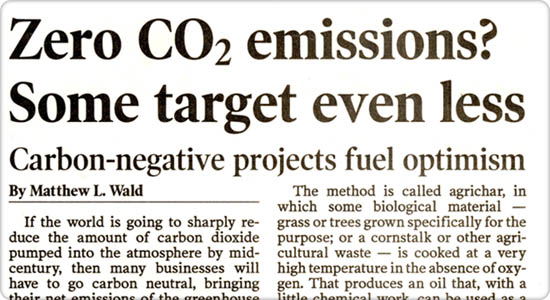
The ECO trend lends itself well to combinations with other trends. So here’s one that’s generosity- related and should make some waves this year: ECO-GENEROSITY.

ECO-GENEROSITY | “Expect companies who are serious about GENERATION G and the environment to quickly move from merely neutralizing and offsetting their undesirable eco-effects to actually boosting the environment by going the extra mile.”
Basically, once companies and consumers can no longer get away with anything less than totally offsetting their negative impact on the environment—and this will happen sooner rather than later—the only way to stand out, to gain any kind of respect in the eco-sphere, will be to go the extra mile and to be ECO-GENEROUS. From planting more trees than is strictly required, to cleaning up not only their own mess, but someone else's, too. Count on being sustainable or being carbon-neutral to soon be merely a starting point, not the end goal. So start thinking about how your brand can actually boost the environment instead of just limiting damage. Call it PR or responsibility or both. As long as you’re going out of your way to be generous, everyone wins.
Check out some early ECO-GENEROSITY examples: some still in the pipeline, others alive-and-kicking:

- The 2 billion tonnes of cement used globally every year accounts for more CO2 emissions than the aviation industry; a total of 5% of the world’s emissions. In a bid to combat this threat, British firm Novacem has developed a new formulation that promises not only to negate the 0.4 tonnes of emissions created by one tonne of standard cement production, but to actually absorb 0.6 tonnes of CO2 in the same amount of cement. This turnaround is achieved by using magnesium silicates as raw material instead of traditional alternatives such as limestone. The silicates require far less heating during production and then absorb CO2 during the hardening process. The invention currently has a patent pending, and despite the many hurdles presented by distribution and licensing, Novacem expects to have products on the market within five years. (Tip of the hat to The Guardian.)
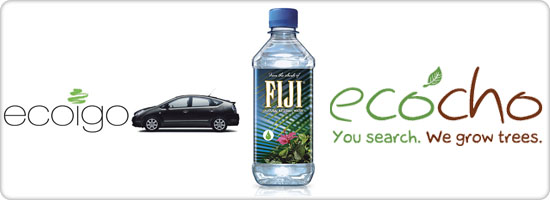
- London-based Ecoigo, a ‘green’ car service, aims to be carbon positive, offsetting double the emissions from every trip as well as from energy used by its office.
- As part of its sustainable growth initiative, FIJI Water will offset its total carbon footprint by 120%. Pity it still involves plastic bottles, of course.
- The first free green search engine—advertising-funded Ecocho—was launched in 2008 with the intention of planting up to two trees for every 1,000 searches made via its Yahoo-supported search engine, removing a ton of CO2 from the atmosphere. The first trees will be planted in Australia via official government-accredited projects. So far, 6,615 trees have been funded, which will remove 3,307,765 kilos of CO2 from the atmosphere. The service is multi-lingual and will be rolled out globally.
- US-based Of The Earth sells handmade Flower Seed Paper that produces flowers after being used. The paper sheets can be planted directly into the soil in a pot or in the garden. Also check out Pangea Organics, who actually incorporate seeds into their packaging.
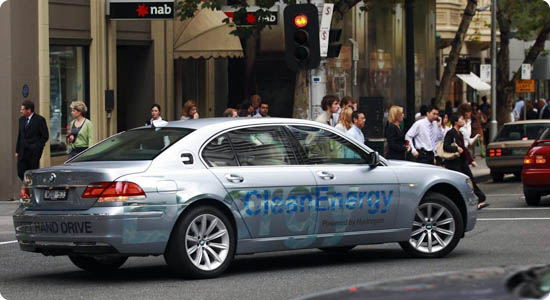
- The following is more than a year old (which means ancient in the trend universe), and there’s much doubt if it will become reality any time soon, but it’s the thought that counts: in 2007, Toyota president Katsuaki Watanabe claimed that Toyota’s dream was to create a car that cleans the air while it moves.
- Also, the BMW Hydrogen 7 series allegedly sports an engine that actively cleans the air, actually showing emissions that, for certain components, such as non-methane organic gases (NMOGs) and carbon monoxides (COs), are cleaner than the ambient air that enters the car’s engine. Now, even if the above is to be taken with a grain of salt, it perfectly illustrates what ECO-GENEROSITY should be about.
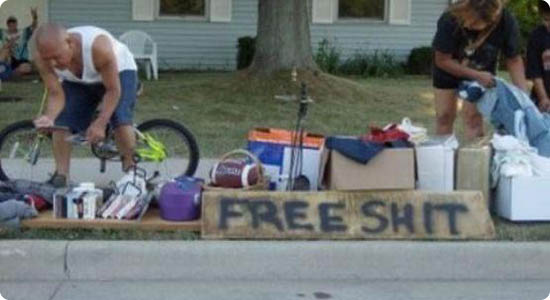
FREE LOVE, or the art of giving away your stuff to consumers, is an enduring trend and is obviously very GENERATION G. Here’s the definition we came up with last year:

FREE LOVE | "The ongoing rise of free, valuable stuff that's available to consumers online and offline, from AirAsia tickets to Wikipedia, and from diapers to music. FREE LOVE thrives on an all-out war for consumers' ever-scarcer attention and the resulting new business models and marketing techniques, but also benefits from the ever-decreasing costs of producing physical goods, the post-scarcity dynamics of the online world (and the related avalanche of free content created by attention-hungry members of GENERATION C), the many C2C marketplaces enabling consumers to swap instead of spend, and an emerging recycling culture. "
For a lengthy FREE LOVE overview, please read the full briefing (published in March 2008) at trendwatching.com/trends/freelove.htm. In addition, here are a few recent FREE LOVE examples for you to run with:
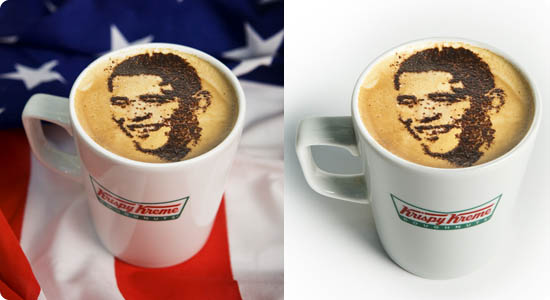
- To celebrate the inauguration of Barack Obama, doughnut purveyor Krispy Kreme UK gave out free Americano coffees. To take advantage of the promotion, which ran the entire week before the inauguration, customers needed only to enter a participating Krispy Kreme UK shop and say, "Yes we can!" to a barista. They’d then walk away with a free Americano coffee.
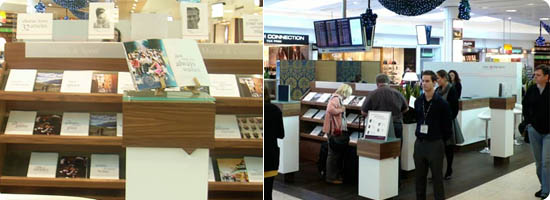
- Last December, global banking giant HSBC offered passengers at Heathrow's Terminal 1 a chance to select magazine articles on topics of interest, and have them bound for easy inflight reading. Through a kiosk located beyond security at Terminal 1, travelers were greeted with an HSBC-branded hardback magazine cover. They then browsed a selection of loose-leaf articles, sourced from coverage around the globe focusing on four general topic areas: home and abroad, commerce and politics, health and sport, and media and culture. Once they'd made their selections, travelers took their articles to HSBC's binding bar to be neatly bound inside the cover. During the two-week pilot effort, 2,030 individual magazines were created, while 7,154 travelers visited the stand.

- Gitchers is a new site that allows consumers to sign up for the chance to receive a free, branded T-shirt. Essentially a database of people who want free T-shirts, either for themselves or for their dogs (special canine T-shirts are distributed through the site as well), consumers tell Gitchers what type of shirt they're interested in—featuring the logo of a favourite brand or website, for example—along with key demographic information such as their birthday, gender and location. Participating companies, meanwhile, tell Gitchers what types of consumers they'd like their T-shirts to be sent to—women aged 35 to 50 in Columbus, Ohio, for example—and pay USD 10.99 each for a minimum of 100 shirts.

- Austrian Tripwolf offers free, customized travel guides in PDF format, combining professional editorial content with user-generated content from some 13,000 globetrotters worldwide.
The ad-supported site focuses primarily on Europe and is backed by MairDumont, Europe's largest publisher of travel guides (including the Baedeker, Dumont and Marco Polo brands), which has put all of its content—covering more than 250,000 destinations and points of interest—online for free. Tripwolf also aggregates third-party content from sites like Wikipedia, Flickr and YouTube, and hotel price comparisons are powered by HotelsCombined.com.

- FreeGreen offers free, downloadable green house plans. FreeGreen's team of engineers and designers works with industry-leading product manufacturers to create home designs that incorporate different combinations of products, materials and vendors. It also provides 3D images, energy simulations and written descriptions to help consumers find the right fit for their lifestyle. FreeGreen relies on paid placement from product manufacturers, but it takes pains to be transparent about the products it displays.

- Last November, the outdoor outfitters at Austrian Northland Professional kicked off a campaign through which billboards gave away free merchandise. Northland affixed samples of its caps, gloves and scarves to roughly 50 billboards throughout the city of Graz. About 20 items were attached to each eye-catching billboard—for a total of about 1,000 in all—and the effort was repeated every other day.
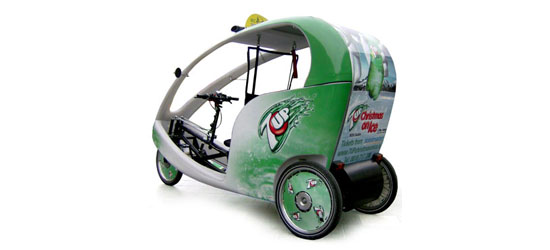
- Pedal-powered taxis have been around for years, but Dublin-based Ecocabs has come up with a FREE LOVE twist: free eco-taxi rides throughout the city. Ecocabs are pedal-powered (but battery-assisted, when necessary) tricycles that can accommodate three people for emissions-free transit through congested urban areas. The brand-sponsored vehicles are customized with brand-specific colors and imagery, and drivers can also hand out leaflets, wear branded clothing or target particular areas of the city. Current sponsors of the vehicles include 7Up, Yoplait and KPMG. The company has an ambitious expansion plan: last year, Ecocabs launched free rides in the streets of Toronto, New York, Chicago, and Detroit.
For how to apply FREE LOVE, we'll refer (again) to the full Trend Briefing.
And then there’s…. BRAND BUTLERS. To refresh your memory:

BRAND BUTLERS | “If consumers value the authentic, the practical, the exclusive, and they're also forever looking to make life more convenient, even save some time, then why persist in bombarding them with one-way advertising campaigns? Instead of stalking potential and existing customers, why not assist them in smart, generous, relevant ways, making the most of your products and whatever it is your brand stands for?”
For all examples we covered last year, please go here. And here’s what we’ve spotted more recently:
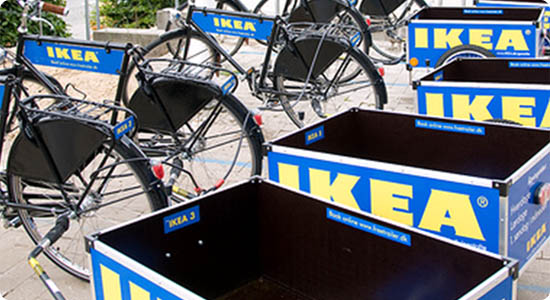
- Shoppers at IKEA furniture stores in Denmark now have a new option for bringing their large, bulky purchases home: a fleet of Velorbis bikes with trailers that are available for loan at virtually no charge. IKEA launched the program after market research found that 20 percent of its Danish customers ride their bikes to the store. It then partnered with Danish Freetrailer, an organization that loans out free trailers for both bikes and cars, to establish the service, which has already begun at IKEA's Gentofte store.
- Even more IKEA (yes, they’re quite active as BRAND BUTLERS): in Sweden, the company offered fatigued Stockholm shoppers a form of respite by installing a Sovhotell (sleep hotel) in one of the city's downtown shopping centers. Guests were welcome to snooze for 15 minutes, and were given eye masks and headphones with soothing music to help them benefit from their sponsored power naps.
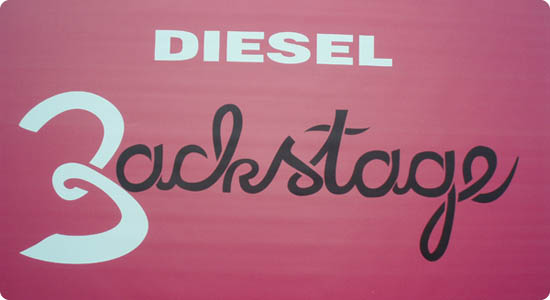
- Last year, at Dutch outdoor music festival Pinkpop, Diesel provided hot showers, including fresh towels, shower gel and a little something for those pesky hangovers. Festival-goers who showed up between 11 am and noon—the 'One Hour Happy Shower'—were also treated to free underwear.
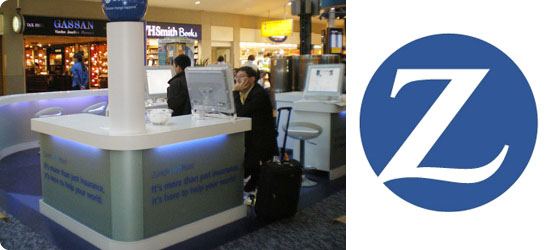
- In November 2008 Zurich Insurance installed ‘Help Point Booths’ at London Heathrow and Zurich airports. The Help Point booths offer free internet access, charging facilities and other concierge services for travelers, including cleaning materials to deal with spilled coffee, and information about travel destinations. Selling insurance will not be a priority, though—the focus is on being helpful. The new campaign arose out of research showing that less than 15% of consumers trust insurance companies and that customers find them uncaring, impersonal and unresponsive.
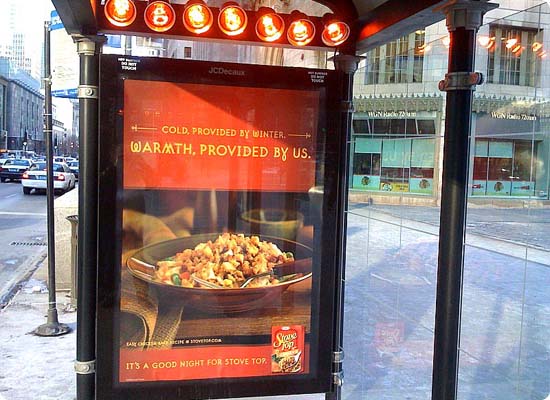
- To promote its new Stove Top Quick Cups, Kraft Foods recently offered warmth and samples at select Chicago area bus stops. Kraft posted ads in 50 bus shelters around Chicago featuring the tagline, "Cold, provided by winter. Warmth, provided by us. It's a good night for Stove Top." The company then heated ten of those shelters to give consumers relief from the cold, and gave out samples of its Quick Cups.
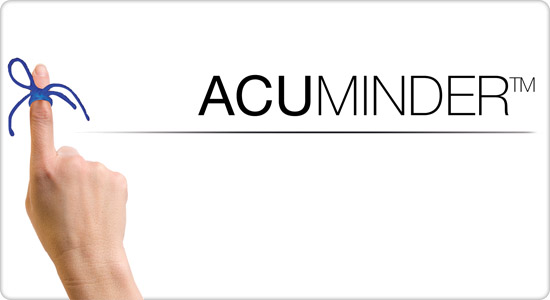
- And let’s not forget the potential for BRAND BUTLERS apps, widgets and social networking: ‘enormous’ doesn’t even start to describe the potential for brands to serve up useful online and mobile applications that directly tie in with consumers’ profiles, portable devices and so on. Just one straightforward example: Johnson & Johnson lets customers register on its site or via Facebook for an Acuminder account offering renewal reminders for contact lenses changes, easy lens purchasing, and eye exam scheduling.
Basically, spend as much time as you can on Yahoo Widgets, scan through Facebook Applications, or roam the virtual aisles of Apple's iPhone App Store and Google's Android Market. Also keep an eye out of the upcoming BlackBerry Storefront, the Palm App Catalog, and Microsoft’s SkyMarket. If that doesn't get you going, nothing will. And remember, you don't have to develop everything yourself: why not partner with someone who has already done the work for you, be it a lone developer or an app-factory?
For how to apply BRAND BUTLERS, we'll refer (again) to the full Trend Briefing.
Never miss a Trend Briefing again
PERKONOMICS is another integral part of GENERATION G. Offering new-style perks like reserved parking for owners of a specific automotive brand, or letting preferred customers jump queues at busy events, is an excellent way to become a more generous brand. For an extensive overview we refer you to our October 2008 briefing, including many examples. Below you'll find examples we’ve spotted more recently.

PERKONOMICS | "A new breed of perks and privileges, added to brands' regular offerings, is satisfying consumers’ ever-growing desire for novel forms of status and/or convenience, across all industries. The benefits for brands are equally promising: from escaping commoditization to showing empathy in turbulent times."

- Through a pilot program, Seattle-Tacoma International Airport now offers six parking spaces in a prime location of the garage for electric vehicles. The green-striped spots—with power sockets—are located on the garage's fifth floor and are available on a first-come, first-served basis. Standard parking rates apply, but the electricity is free.

- Australian Perkler is an online community "for perks and people who love them," giving shoppers a central place to manage all of their loyalty and rewards programs. Users begin by registering and setting up a virtual wallet to track all of their cards. With a database of more than 500 programs and 150,000 rewards, Perkler combines information about those cards so that shoppers can search all of them at once, even linking to specific retail locations so they know where to get each perk they're interested in. The site is free for consumers; rather, its business model depends on partnering with the owners of loyalty programs, offering aggregated data on customer behavior, better targeting, a platform for advertising, and more touch points for consumer interaction. Perkler hopes to launch in the US and UK soon.
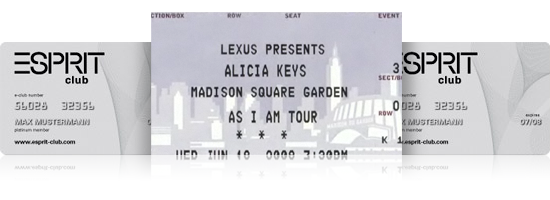
- Fashion brand Esprit rewards its most devoted customers with an exclusive Esprit Club Platinum Card that offers several perks (in addition to the obligatory discounts): free alteration service at Esprit stores, professional shopping advice by appointment, access to a special newsletter about exclusive products and promotions, and invitations to exclusive Esprit Events.
- Lexus sponsored the Summer 2008 Alicia Keys tour; as part of the sponsorship deal, Lexus offered free parking and VIP passes to any member of the audience that arrived in a Lexus.
For how to apply PERKONOMICS, we'll refer (again) to the full Trend Briefing.
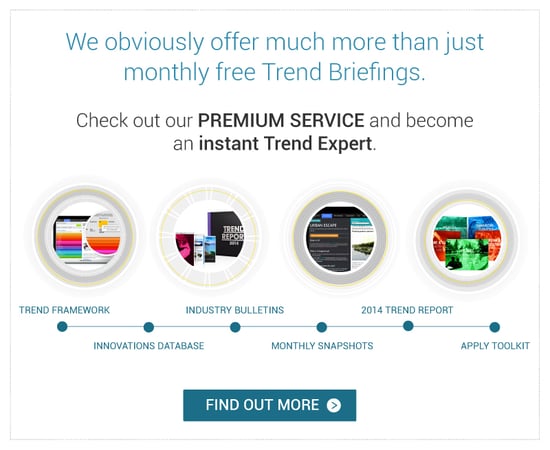
This sub-trend keeps on giving: for more than three years now we've been tracking the rise in novel try-out concepts, and the drivers behind TRYVERTISING are alive and kicking in 2009:

TRYVERTISING | "A new breed of product placement in the real world, integrating your goods and services into daily life in a relevant way, so that consumers can make up their minds based on their experience, not your messages."
Needless to say that this year, 'try before you buy' will gain even more popularity due to the current economic crisis and more cautious consumers. Some recent GENERATION G-meets-TRYERTISING spottings:
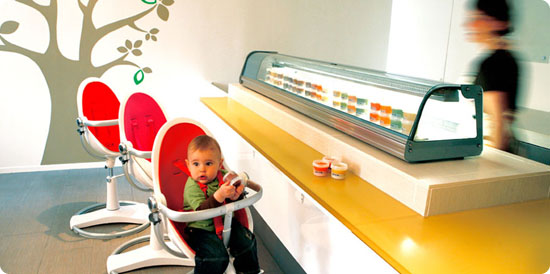
- Californian Pomme Bébé serves nothing but organic baby and toddler meals prepared fresh in its on-site kitchen. The TRYVERTISING twist? Discerning baby clientele can sample Pomme Bébé's offerings—for free—at its Tasting Bar and luxurious, sit-down Bébé Lounge.
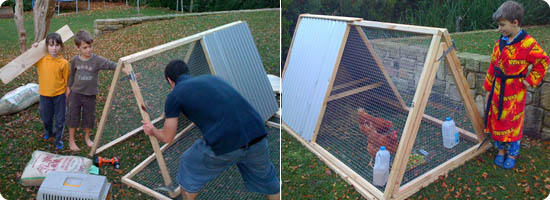
- And just for the fun of it: Sydney-based Rentachook manufactures and sells a variety of coops, as well as selling the "chooks" (as they're known down under) and feed to go with them. For those who want to test the chicken-keeping waters before diving in, the company lets customers try out its Eco-Coop package and see how it goes for as long as six weeks before they commit to keeping it.

- Taking its cues from Tokyo's Sample Lab, where Japanese consumers can sample and test new products, a similar concept has come to China with the launch of Shanghai-based Sampleplaza. Sampleplaza is a new showroom featuring brand-new products not yet available to the Chinese mainstream. Membership costs 100 RMB (about USD 15 / EURO 11) per year, and in exchange, consumers are invited to visit Sampleplaza as often as they want and test out a diverse range of products, from exercise equipment to pantyhose, cosmetics to high-tech, drinks, BBQ sauce, soup and snacks. In addition to trying out samples in the showroom, members are allowed to take home up to 5 items per visit as well. Either way, they need only fill out an online survey—a maximum of 10 questions per product—for each sample that they test.

- Consumers who sign up with Latest in Beauty for free samples begin by filling out a detailed questionnaire about their natural coloring, needs and preferences. Once they've done that, they can browse the site for products that match their profile and read new product reviews by an independent panel. Based on what they see, they can then choose up to three samples to try at home each month. A few weeks later, Latest in Beauty sends an email requesting feedback, which it then forwards to the cosmetics brands. Latest in Beauty is open only to UK users, who must pay GBP 1 by text message from a UK-based mobile phone to cover postage and handling of each shipment of samples.
For how to apply TRYVERTISING, we'll refer (again) to the full Trend Briefing.
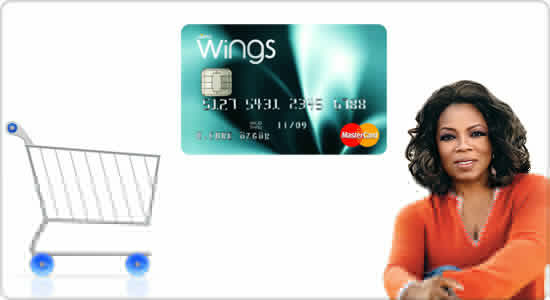
Here's a simple, under-used branding tactic that, if practiced consistently and long-term, will delight customers, and do more for positive brand buzz than most mass advertising campaigns: random acts of kindness. Yes, that's right; everything from picking up the tab to sending a surprise gift to loyal customers—preferably in a well-crafted, well-understood campaign—will soften up even the toughest of customers. Learn from:
- Leading Chinese e-tailer DangDang.com gives back to its customers—and encourages their vigilant attention to the site—by randomly assigning one hour a day as “Lucky Time” in which all purchases made within that hour are free of charge. (Tip of the hat to PSFK.com.)
- Wings is a credit card brand owned by Akbank, one of Turkey's largest banks. The card is targeted at frequent travelers, who earn miles as they shop at member restaurants and shops. Wings recently partnered with five upscale restaurants in Istanbul—Ulus 29, Hakkasan, Gilt, Topaz and Beymen Brasserie—to offer a random selection of lucky Wings members a pleasant surprise. After having dinner at one of the restaurants and paying with their Wings card, the customer is notified that Wings will foot the bill.
- Northern-Irish fashion brand ARK (short for Acts of Random Kindness) sells a line of logo-emblazoned shirts for men and women. They ask that each time a customer wears one, they do something kind for someone else – whether it be buying someone a coffee or giving up their seat on the bus. In addition to spreading random acts of kindness, ARK's shirts will no doubt also prove to be conversation starters, providing wearers with status stories to share with family and friends.
- While Oprah’s Target-sponsored reality show, The Big Give, won't return to the small screen (Oprah felt that the show—which debuted as the third-most watched series but gradually lost steam—had run its course), it remains an inspiring example of the PR power of RAK when done well.
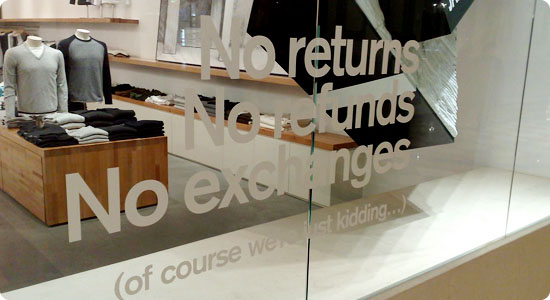
Last but not least, there’s a world to be won by being less rigid—if not downright frigid—when it comes to interacting with your customers. (F)RIGID NO MORE is as close as you’ll get to the required ‘generous’ mindset. It’s about return policies that don’t require a receipt from loyal customers. It’s about hotels not charging an extra night for that late checkout. It’s about ditching three-months-notice rules for a gym member who wants to cancel his membership due to illness. It’s—as described by the always excellent Seth Godin- about recommending a competitor to a customer that you can’t help.
Anyway, you get the picture. GENERATION G is about not screwing your customers over. It’s about treating your customers the way you would like to be treated the moment you shed your company outfit and don your consumer clothes.

Your CFO in 2009?
If the recession is hitting you where it hurts, and your budgets are tight, GENERATION G may feel like too costly a trend to capitalize on. We beg to differ:
- Not all GENERATION G projects and initiatives are costly. Often, it’s a case of mindset, of attitude, of being creative, of finding the right partners, without spending millions. In fact, many of the services and projects highlighted in this briefing didn't cost the world.
- Those projects that do involve serious money should be paid for by shifting funding from any kind of bland, non-relevant, non-interactive, and above all, non-generous ad campaign you’re planning to run this year. Hey, if others—in all the examples above—can do it, so can you.
- Not infusing your company’s or brand’s mindset with a heavy dose of generosity will eventually cost you much more. Like, seeing your brand go bust. Which makes any kind of expenditure on generosity a bargain.

Be generous or get ready to go over to the other side ;-).
Joining GENERATION G as a company or a brand is not really optional, it’s a fundamental requirement if you want to stay relevant in societies that value generosity, sharing and collaboration. Joining obviously entails more than adding a social responsibility or sustainability department; it means adopting a generous mindset that permeates every interaction with your community, with your employees, with your customers, with, wait for it, your ‘stakeholders’. Nothing more or less than a holistic approach* to generosity and business.
The benefits?
- It doesn’t hurt that in turbulent times like now, generosity will find an extra-appreciative audience, and certainly won't be forgotten.
- Not only will your customers be more appreciative, they'll also return your favors by being more willing to spread the word about you. And being more willing to collaborate with you, co-creating or co-inventing or co-improving. Which would get us to CUSTOMER-MADE. See, we told you this would be an umbrella trend.
- And last but not least, to manage a company with a caring, generous mindset can actually be good for your soul, too ;-)
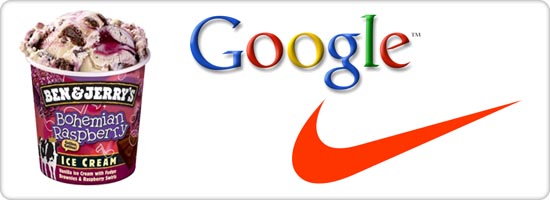
* Quick, mention just ONE Big B2C Brand that has embraced generosity as a leading theme throughout its dealings. And no, usual suspects like Ben & Jerry’s, Google and Nike don't count. Let's face it, most companies don't even have an integrated PERKONOMICS or BRAND BUTLER strategy in place yet, let alone an integrated approach to all GENERATION G sub-trends. The good news? Just by making the first firm steps to a holistic approach to generosity, your brand will immediately stand out, if not become known for being a truly generous brand.
So…. Get started on at least one CO-DONATION project, one ECO-GENEROSITY project, one FREE LOVE project, one PERKONOMICS project, one BRAND BUTLER project, one TRYVERTISING project, one RAK project, and one (F)RIGID NO MORE project. All aimed at coming up with new products, services, experiences and/or campaigns for your customers. Or start the world's first GENERATION G agency/consultancy to help other brands develop and implement a portfolio of ‘generous’ offerings and processes.
Anyway, whatever you do, do it generously!
![]() P.S. Special thanks to Jody Turner and Kathy Baylor from San Francisco / New York based Culture of Future, who gave us some great GENERATION G input. For more generosity insights pertaining to attitude differences between various age groups (Boomers, Gen X, Gen Y), please do visit their site.
P.S. Special thanks to Jody Turner and Kathy Baylor from San Francisco / New York based Culture of Future, who gave us some great GENERATION G input. For more generosity insights pertaining to attitude differences between various age groups (Boomers, Gen X, Gen Y), please do visit their site.




